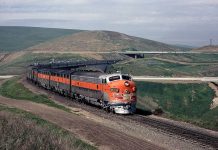Enjoy the compilation of Longest Freight Trains on Indian Railways something which is not regularly seen daily. Pythons are generally seen running on single line sections where 2 empty freight trains are coupled together and sent back to the loading Terminal. This is a smart way to reduce the traffic on single track sections instead of operating as 2 separate trains. This saves operational cost for the railways and reduced rail traffic.
The draw back of running a Python is they require a main line clearance through out the section as these trains cannot fit into a loop line due to its length, therefore any kind of train coming in the opposite direction has to get on the loop line making way for the Python.
Longest Train in Indian Railways – PYTHON 1.5 KM long : VIDEO
Technically these type of coupled trains are called IVL – Increased Vehicle length. Loco Pilots will be present in all the Locos and control the train separately by communicating through a Walky-Talky device.
In the freight segment, IR ferries various commodities and fuels in industrial, consumer and agricultural segments across the length and breadth of India. IR has historically subsidised the passenger segment with income from the freight business.
As a result, freight services are unable to compete with other modes of transport on both cost and speed of delivery, leading to continuous erosion of market share. To counter this downward trend, IR has started new initiatives in freight segments including upgrading of existing goods sheds, attracting private capital to build multi-commodity multi-modal logistics terminals, changing container sizes, operating time-tabled freight trains and tweaking with the freight pricing/product mix.
Also, end-to-end integrated transport solutions such as roll-on, roll-off (RORO) service, a road-rail system pioneered by Konkan Railway Corporation in 1999 to carry trucks on flatbed trailers,[96] is now being extended to other routes across India.
Perhaps the game changer for IR in the freight segment, are the new dedicated freight corridors that are expected to be completed by 2020. When fully implemented, the new corridors, spanning around 3300 km, could support hauling of trains up to 1.5 km in length with 32.5 ton axle-load at speeds of 100 kilometres per hour (62 mph).
Also, they will free-up capacity on dense passenger routes and will allow IR to run more trains at higher speeds. Additional corridors are being planned to augment the freight infrastructure in the country.



















